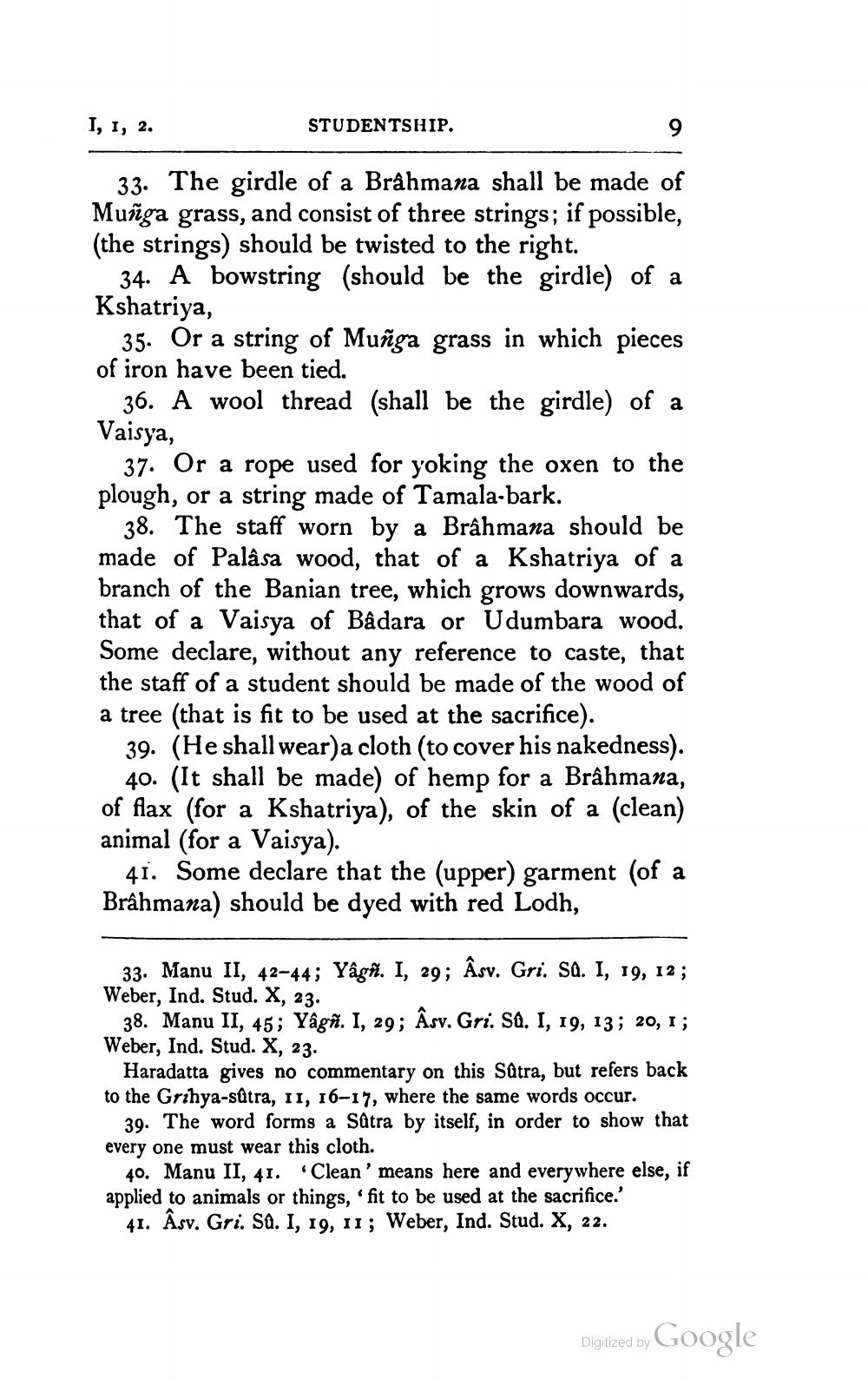________________
I, 1, 2.
STUDENTSHIP.
33. The girdle of a Brâhmana shall be made of Muñga grass, and consist of three strings; if possible, (the strings) should be twisted to the right.
34. A bowstring (should be the girdle) of a Kshatriya,
35. Or a string of Muñga grass in which pieces of iron have been tied.
36. A wool thread (shall be the girdle) of a Vaisya,
37. Or a rope used for yoking the oxen to the plough, or a string made of Tamala-bark.
38. The staff worn by a Brâhmana should be made of Palâsa wood, that of a Kshatriya of a branch of the Banian tree, which grows downwards, that of a Vaisya of Bâdara or Udumbara wood. Some declare, without any reference to caste, that the staff of a student should be made of the wood of a tree (that is fit to be used at the sacrifice).
39. (He shall wear)a cloth (to cover his nakedness).
40. (It shall be made) of hemp for a Brâhmana, of flax (for a Kshatriya), of the skin of a (clean) animal (for a Vaisya).
41. Some declare that the (upper) garment (of a Brâhmana) should be dyed with red Lodh,
33. Manu II, 42-44; Yâgñ. I, 29; Âsv. Gri. SQ. I, 19, 12; Weber, Ind. Stud. X, 23.
38. Manu II, 45; Yâgñ. I, 29; Âsv. Gri. SQ. I, 19, 13; 20, 1; Weber, Ind. Stud. X, 23.
Haradatta gives no commentary on this Satra, but refers back to the Grihya-stra, 11, 16-17, where the same words occur.
39. The word forms a Sätra by itself, in order to show that every one must wear this cloth.
40. Manu II, 41. Clean' means here and everywhere else, if applied to animals or things, fit to be used at the sacrifice.'
41. Âsv. Gri. SQ. I, 19, 11; Weber, Ind. Stud. X, 22.
Digitized by Google




